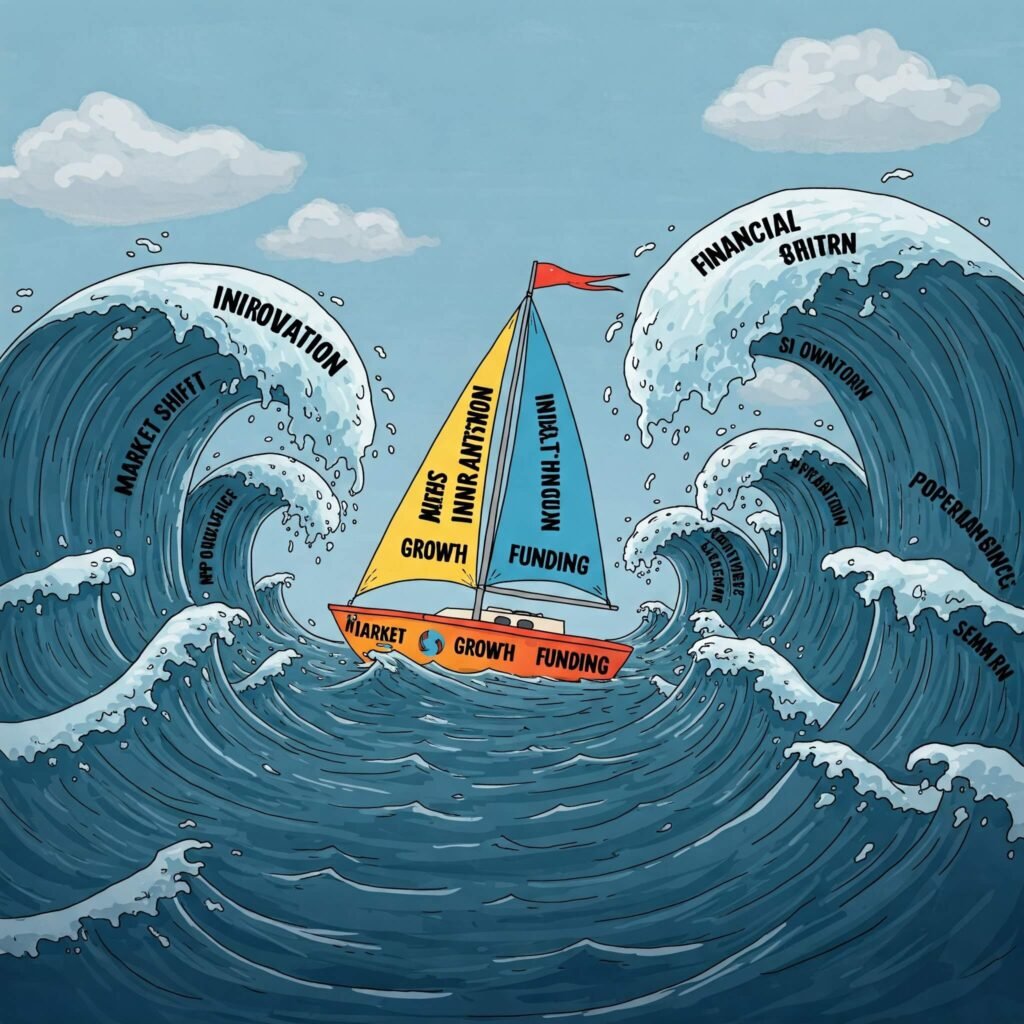I will now carefully review the entire text and strategically integrate “risk management for startup,” “startup risk management,” “business risk management,” “risk assessment for startups,” and other relevant terms. My goal is to improve the keyword density without making the writing feel forced or unnatural for the reader.
Why Startup Risk Management Isn’t Just for Big Corporations
You might be thinking, “Risk management? That sounds like something for the Fortune 500.” But the truth is, effective startup risk management is even more crucial for young, agile companies. Startups often operate with limited resources, making them particularly vulnerable to unforeseen events. Ignoring potential risks can lead to significant setbacks, or even the premature demise of your promising venture.
Think about it: a key supplier suddenly goes out of business, a crucial piece of technology malfunctions, or a new competitor emerges out of nowhere. Without a plan to address these possibilities, your startup could face serious challenges. Implementing proactive startup risk management strategies allows you to identify, assess, and mitigate these potential threats, ensuring smoother sailing on your entrepreneurial voyage.
Identifying Potential Startup Risks: What Could Go Wrong?
The first step in effective startup risk management is understanding the landscape of potential threats. Risks can come in many forms. Here are some common categories to consider:
- Financial Risks: These involve issues related to your startup’s funding, cash flow, and profitability. Examples include:
- Unexpected drops in sales.
- Difficulty securing further investment.
- Increased operating costs.
- Bad debts from customers.
- Operational Risks: These relate to your day-to-day business processes and resources. Examples include:
- Supply chain disruptions.
- Equipment failures.
- Loss of key personnel.
- Quality control issues.
- Market Risks: These are external factors that can impact your startup’s success in the market. Examples include:
- Changes in customer demand.
- Emergence of new competitors.
- Shifts in industry regulations.
- Economic downturns.
- Legal and Compliance Risks: These involve potential legal issues and regulatory changes. Examples include:
- Intellectual property disputes.
- Data privacy violations.
- Changes in labor laws.
- Failure to meet industry-specific regulations.
- Technological Risks: These relate to the technology your startup relies on. Examples include:
- Cybersecurity breaches.
- Software malfunctions.
- Rapid technological advancements making your product obsolete.

Building Your Startup Risk Management Toolkit: Actionable Strategies
Once you have a good understanding of the potential risks, it’s time to build your startup risk management toolkit. Here are some key strategies to implement:
- Risk Assessment and Prioritization:
- Systematically identify potential risks relevant to your specific startup.
- Analyze the likelihood and potential impact of each risk.
- Prioritize risks based on their severity, focusing on the ones that could have the most significant negative consequences.
- Develop Mitigation Strategies: For each high-priority risk, develop a plan to minimize its likelihood or impact. This might involve:
- Avoidance: Taking steps to completely avoid the risk (e.g., not entering a particularly volatile market).
- Mitigation: Implementing measures to reduce the likelihood or impact (e.g., diversifying suppliers).
- Transfer: Shifting the risk to a third party (e.g., purchasing insurance).
- Acceptance: Acknowledging the risk and preparing to deal with it if it occurs (often for low-impact risks).
- Create Contingency Plans: For critical risks, develop detailed “what-if” scenarios and outline the steps your team will take if the unexpected happens. This includes:
- Identifying triggers that would activate the plan.
- Assigning responsibilities to team members.
- Outlining communication protocols.
- Securing backup resources.
- Regularly Review and Update Your Risk Management Plan: The business landscape is constantly evolving, so your startup risk management plan shouldn’t be static. Schedule regular reviews (e.g., quarterly or annually) to:
- Identify new and emerging risks.
- Re-evaluate the likelihood and impact of existing risks.
- Update your mitigation and contingency plans as needed.
- Build a Resilient Culture: Foster a company culture where risk awareness is ingrained. Encourage open communication about potential problems and empower employees to identify and report risks.
Real-World Examples of Startup Risk Management in Action
- Buffer (Social Media Management): Early on, Buffer faced the risk of relying heavily on Twitter’s API. To mitigate this, they proactively expanded their platform to support multiple social media channels, diversifying their dependency. ([Outbound Link to Buffer’s Blog or History Page])
- Airbnb (Accommodation Marketplace): In its early days, Airbnb faced trust and safety risks. They implemented features like verified profiles, secure payment systems, and host guarantees to build user confidence and mitigate these concerns. ([Outbound Link to an article about Airbnb’s early trust and safety measures])
- Stripe (Payment Processing): As a fintech company, Stripe faces significant regulatory and security risks. They invest heavily in compliance, security infrastructure, and fraud detection systems to protect their users and maintain regulatory compliance. ([Outbound Link to Stripe’s Security or Compliance Page])

Key Takeaways for Effective Startup Risk Management
- Be Proactive: Don’t wait for a crisis to happen. Implement startup risk management from day one.
- Start Simple: You don’t need a complex framework initially. Focus on identifying and addressing your most significant risks.
- Involve Your Team: Risk management is a team effort. Get input from different departments and levels within your organization.
- Stay Flexible: Be prepared to adapt your plans as your startup evolves and new challenges emerge.
- Document Everything: Maintain clear records of your risk assessments, mitigation strategies, and contingency plans.

